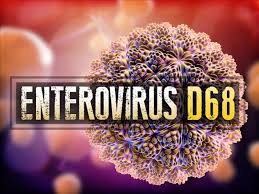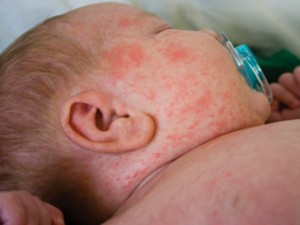
Over the past two months hundreds of children across the country have been affected by Enterovirus, known as EV-D68. Sadly there have been more than 600 cases reported and 5 children have died. Therefore, it’s no surprise that families are concerned and also confused about this respiratory illness. I’ve broken it down below in order to give you a better understanding about what Enterovirus is, and how to protect your family!
- Enteroviruses are actually more common than one may realize – in fact there are over 100 different types and they infect over 10 million people every year. Each year the mix of viruses going around the country varies, and this year there is a higher number of EV-D68 cases than in the past.
- This particular strain of Enterovirus, EV-D68, can cause a fever, runny nose, body aches and other cold-like symptoms. On the more severe end it can also cause wheezing and difficulty breathing.
- The virus has this biggest impact on babies, kids, and teens who haven’t had exposure to it previously and therefore don’t have immunity to it.
Now that you know the facts abut Enterovirus and that it’s more prevalent than usual you are probably wondering about prevention and protection. Let’s dive right into how you can turn your awareness into action. First thing to note: it’s a respiratory virus, which means that the virus can be found in an infected person’s respiratory secretions, such as saliva and nasal mucus. This means it spreads from person to person when an infected person coughs, or sneezes. Here are some ways you can protect yourself and your family.
- Wash your hands OFTEN and with soap and water for 20 seconds. To make sure you are washing long enough try singing the Happy Birthday song in your head while washing Fact: the CDC actually says that hand washing is the best way to protect yourself from viruses.
- Avoid close contact such as kissing, hugging, and sharing cups or eating utensils with people who are sick.
- Clean and disinfect frequently touched surfaces at work and at home, including toys and doorknobs, especially if someone is sick.
- Avoid touching your eyes, nose and mouth with unwashed hands.
Stay informed. If you have questions or think you or your family member may be sick then talk to your doctor! There’s no need to be scared or hide your children. You are powerful and armed with knowledge of what the Enterovirus is and how you can protect yourself and your family from it!
Wishing you good health.
Dr. V





